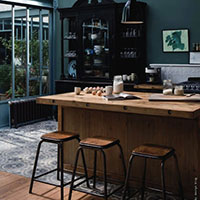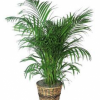
Why You Want Plants in Your Home
By Budget Trucks|April 07, 2015
When you are planning out the design of your new home, adding plants gives you more than just the aesthetic value the green leaves and colored flowers bring. You may not know this but plants can purify the air in your home, removing germs, bacteria, and impurities in the air. Plants are an inexpensive way to add beauty and healthful healing to your environment. Yes, plants look good and add color and design elements to your home, but those are not the only reasons you want to have plant throughout your home. If you were told that you can prevent illnesses for your family for less than the cost of the medication that it would take to make them well, wouldn’t you jump at the opportunity?
What Types of Plants Clean the Air?
We have a list of the top 10 plants that clean and filter the air. The list comes from ; they have done some pretty extensive research on the topic for scientific and space exploration reasons. In addition to consulting this list, be sure to investigate if there are any plants that anyone in your family is allergic to. If anyone in your family is prone to allergies, you should choose hypoallergenic plants. Another important thing to consider is that many house plants are not good for pets, so lookout for those or keep them out of reach of your pets. There are so many different plants that will help improve the air quality and design aesthetic in your home, but here are NASA’s top 10 plants for cleaning the air:
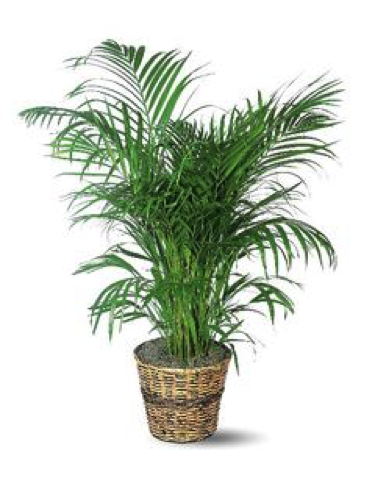
Areca Palm Photo Credit: Pinterest
The Areca Palm removes all tested indoor air toxins. This popular plant is easy to care for and the leave have a gracious flow that softens the energy in your room.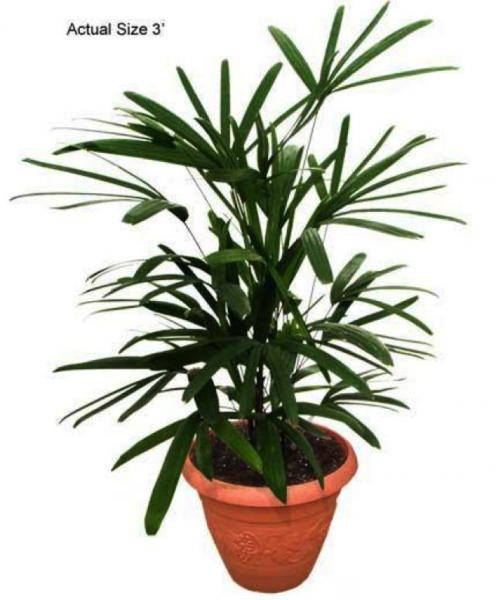
Lady Palm Photo Credit:
The Lady Palm removes most indoor pollutants. It is one of the best plants used to improve indoor air quality. The Lady Palm is easy to care for and a very popular choice for house plants.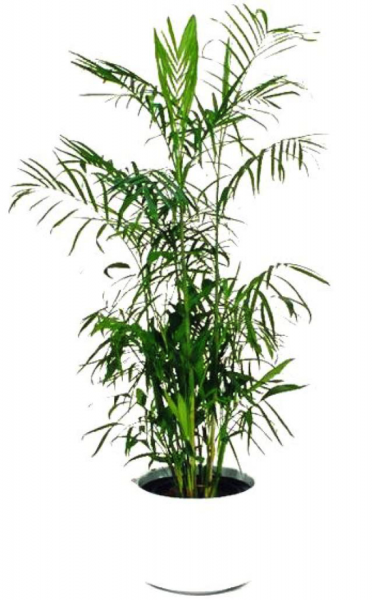
Bamboo Palm Photo Credit:
Having this plant in your home removes benzene, trichloroethylene, and formaldehyde from the air your family breathes. Many people consider bamboo plants to be lucky; this bamboo palm adds a peaceful and tropical feeling to any environment. It is also most resistant to insects.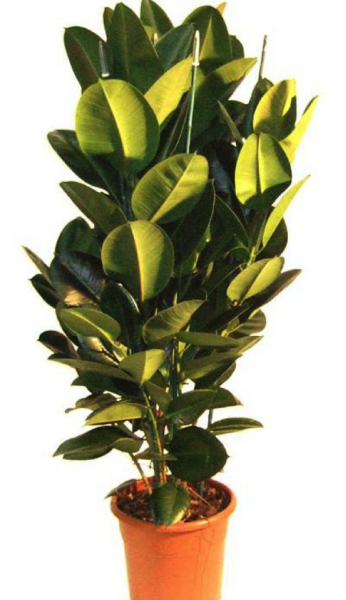
Rubber Plant Photo Credit:
Besides making for a catchy song, this plant removes most pollutants, especially formaldehyde. It has an excellent ability to remove toxins from any indoor environment. It can survive in cool temperatures and dim light.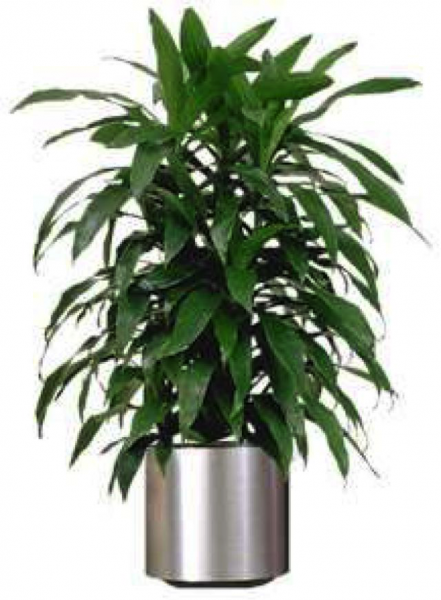
Dracaena Janet Craig Photo Credit:
The Dracaena Janet Craig removes most pollutants, especially trichloroethylene. This attractive plant is the best for removing toxins in the Dracaenas family. It is a good looking plant and doesn’t need a lot of light to thrive.
English Ivy Photo Credit:
This popular and very pretty plant is hardy, easy to grow, and very adaptable as long as it doesn’t get too hot inside your home. English Ivy removes most pollutants, especially formaldehyde.
Dwarf Date Palm Photo Credit:
Having a Dwarf Date Palm in your home will remove most pollutants, especially xylene. This palm grows slowly but can reach up to 5 or 6 feet high, so you eventually might think of keeping it in a corner spot.
Ficus Alii Photo Credit:
This plant also can get pretty tall, so a corner pot is a good choice for this pollutant remover. It removes most pollutants, especially formaldehyde.
Boston Fern Photo Credit:
This lush plant is very popular and often a favorite choice because of its versatility. It does well in a hanging planter or in a pot. It also removes most pollutants, especially formaldehyde.
Peace Lily Photo Credit:
The Peace Lily can bring on a strong and peaceful energy to any room. It grows gentle white flowers and is easy to care for. In addition to being a beautiful addition to your home it removes alcohols, acetone, trichloroethylene, benzene, and formaldehyde.
Feel More Comfortable
Plants not only continually clean the air we breathe; they also can make your environment more comfortable by reducing the humidity in the air. During the process of photosynthesis, moisture is removed from the air, which makes the room feel cooler and more comfortable.
Reduce Noise
Office spaces can really benefit from the noise reduction benefits that plants offer. Your home can also benefit in the same way. If you have a home office, plants can help muffle the noise and help out with privacy. If you have other noisy areas of concern in your home, adding plants can help diffuse the noise and give everyone the privacy and peace and quiet they need.
Plant Design Ideas
There are so many different design options when adding plants to your home. You can put a potted plant or small tree in a corner, hang plants, or put plants on shelves and window sills. Choose plants with flowers that complement the designs and colors in each room. In addition to those ideas, you can harvest an herb garden in your kitchen, and while you have the green thumb going, add vegetables and fruits to your outdoor garden.
Summary and Takeaways
Plants can add beauty and health to your home. We hope you learned a great deal about plants from reading our article today. Check with your local plant expert or plant nursery to get help finding the right plants for your home. A lot might depend on your location and climate. Getting plants that work best with your climate and knowing how to care for your plants will make a big difference between success and failure. Once you decide on your plant, make sure you learn how to care for them properly and add their care to your home routine to ensure consistency.
What Types of Plants Clean the Air?
We have a list of the top 10 plants that clean and filter the air. The list comes from ; they have done some pretty extensive research on the topic for scientific and space exploration reasons. In addition to consulting this list, be sure to investigate if there are any plants that anyone in your family is allergic to. If anyone in your family is prone to allergies, you should choose hypoallergenic plants. Another important thing to consider is that many house plants are not good for pets, so lookout for those or keep them out of reach of your pets. There are so many different plants that will help improve the air quality and design aesthetic in your home, but here are NASA’s top 10 plants for cleaning the air:
- Areca Palm:

Areca Palm Photo Credit: Pinterest
The Areca Palm removes all tested indoor air toxins. This popular plant is easy to care for and the leave have a gracious flow that softens the energy in your room.
- Lady Palm:

Lady Palm Photo Credit:
The Lady Palm removes most indoor pollutants. It is one of the best plants used to improve indoor air quality. The Lady Palm is easy to care for and a very popular choice for house plants.
- Bamboo Palm:

Bamboo Palm Photo Credit:
Having this plant in your home removes benzene, trichloroethylene, and formaldehyde from the air your family breathes. Many people consider bamboo plants to be lucky; this bamboo palm adds a peaceful and tropical feeling to any environment. It is also most resistant to insects.
- Rubber Plant:

Rubber Plant Photo Credit:
Besides making for a catchy song, this plant removes most pollutants, especially formaldehyde. It has an excellent ability to remove toxins from any indoor environment. It can survive in cool temperatures and dim light.
- Dracaena Janet Craig:

Dracaena Janet Craig Photo Credit:
The Dracaena Janet Craig removes most pollutants, especially trichloroethylene. This attractive plant is the best for removing toxins in the Dracaenas family. It is a good looking plant and doesn’t need a lot of light to thrive.
- English Ivy:
English Ivy Photo Credit:
This popular and very pretty plant is hardy, easy to grow, and very adaptable as long as it doesn’t get too hot inside your home. English Ivy removes most pollutants, especially formaldehyde.
- Dwarf Date Palm:
Dwarf Date Palm Photo Credit:
Having a Dwarf Date Palm in your home will remove most pollutants, especially xylene. This palm grows slowly but can reach up to 5 or 6 feet high, so you eventually might think of keeping it in a corner spot.
- Ficus Alii:
Ficus Alii Photo Credit:
This plant also can get pretty tall, so a corner pot is a good choice for this pollutant remover. It removes most pollutants, especially formaldehyde.
- Boston Fern:
Boston Fern Photo Credit:
This lush plant is very popular and often a favorite choice because of its versatility. It does well in a hanging planter or in a pot. It also removes most pollutants, especially formaldehyde.
- Peace Lily:
Peace Lily Photo Credit:
The Peace Lily can bring on a strong and peaceful energy to any room. It grows gentle white flowers and is easy to care for. In addition to being a beautiful addition to your home it removes alcohols, acetone, trichloroethylene, benzene, and formaldehyde.
Feel More Comfortable
Plants not only continually clean the air we breathe; they also can make your environment more comfortable by reducing the humidity in the air. During the process of photosynthesis, moisture is removed from the air, which makes the room feel cooler and more comfortable.
Reduce Noise
Office spaces can really benefit from the noise reduction benefits that plants offer. Your home can also benefit in the same way. If you have a home office, plants can help muffle the noise and help out with privacy. If you have other noisy areas of concern in your home, adding plants can help diffuse the noise and give everyone the privacy and peace and quiet they need.
Plant Design Ideas
There are so many different design options when adding plants to your home. You can put a potted plant or small tree in a corner, hang plants, or put plants on shelves and window sills. Choose plants with flowers that complement the designs and colors in each room. In addition to those ideas, you can harvest an herb garden in your kitchen, and while you have the green thumb going, add vegetables and fruits to your outdoor garden.
Summary and Takeaways
Plants can add beauty and health to your home. We hope you learned a great deal about plants from reading our article today. Check with your local plant expert or plant nursery to get help finding the right plants for your home. A lot might depend on your location and climate. Getting plants that work best with your climate and knowing how to care for your plants will make a big difference between success and failure. Once you decide on your plant, make sure you learn how to care for them properly and add their care to your home routine to ensure consistency.


